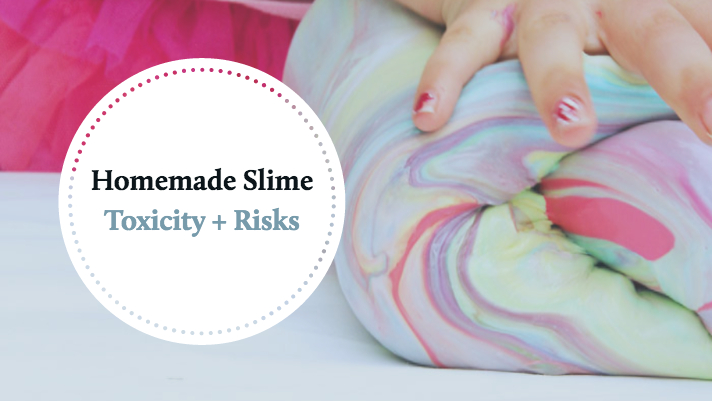There has been a rise in a love of crafting homemade slime in households. While not a threat to creativity, some ingredients in slime pose a threat to our beloved pets.
Table Salt
This is often the most concerning ingredient in many slime recipes. Pets can develop salt toxicity or hypernatremia. Depending on the amount of salt ingested symptoms can range from GI upset to Central Nervous System signs such as lethargy, tremors, seizures, coma, and death. Signs of toxicity can be seen at 2 g/kg , or 0.13 tablespoons/kg of body weight. To put this into perspective, a 10lb dog (4.54 kg) could began to show signs of toxicity after ingesting just over 0.5 tablespoons of table salt. For that same 10 lb dog a fatal dose is possible at 1.5 tablespoons of salt ingested. Some slime recipes do not contain a particular amount of salt but just instructions to continue adding salt until the desired consistency/texture is achieved. This can make it difficult to gauge the amount of salt in the finished product. Some homemade slimes contain epsom salt instead of table salt. It would generally take more epsom salt than table salt to cause toxicity but this is still an ingredient that should not be ingested in large amounts as significant GI signs can result.
School glue
This is a common ingredient that does not usually hold significant potential for toxicity. When ingested GI irritation (vomiting, diarrhea, anorexia) is possible.
Shaving cream, hand soap, dish soap, shampoo and most hand lotions
These ingredients cause not much more than GI irritation but variations in ingredients are possible that may increase the risk for toxicity. For example, there are shampoos and lotions that contain cocoa bean (Theobroma Cacao) extract which is an ingredient of concern for chocolate toxicity.
Boric Acid
Generally, in acute (one time) doses, this is a GI irritant that can cause vomiting, diarrhea, abdominal pain, or anorexia.
Saline Contact Lens Solution
While some contact lens solutions are just saline, in addition to the salt concern, many (usually the ones used to make slime) contain Boric Acid or Borate which is a GI irritant.
Laundry detergent
Laundry detergent, when ingested, can be a GI irritant or for some products even cause corrosive injury to the oral cavity and GI tract. Mixed into a product like a slime it would be diluted and less likely to cause corrosive injury but if not well mixed and if an area of concentrated laundry detergent came into contact with the GI tract there would still be potential for injury.
Toothpaste
Many kinds of toothpaste contain xylitol which can pose significant toxicity risk for dogs. Depending on the dose ingested, xylitol can cause profound hypoglycemia (low blood sugar) and in higher doses liver failure. Both of these levels of toxicity can be life-threatening for your dog.
Liquid Starch
Most liquid starches contain ingredients that would be expected to cause GI irritation at most when ingested in a slime mixture.
There are other concerns in addition to toxicity when our pets ingest slime. Large amounts of slime could pose a risk for a foreign body obstruction or blockage in the GI tract.
When slime contains decorative additives such as sequins, tinsel, or glitter, injury to the GI tract is also possible. Tinsel is of particular concern as if long enough strands (more than a couple of inches long) are ingested, linear foreign body (a condition where string type materials can cause injury to the GI tract by bunching it up and causing blockage or necrotic damage)is possible.
Another concern is that slime is by nature slimy, and viscous. If your pet vomits this material back up there is a risk for aspiration of the product into the lungs which can quickly become a life threatening situation.
How do we prevent our pets from ingesting homemade slime?
When the slime is not in use keep it somewhere that is not accessible to your pet.
Keep your pets out of areas where slime is in use.
Teach your children not to walk away from their slime project without putting it somewhere that is inaccessible to pets.
Store the slime making ingredients out of reach of your pets at all times.
Slime ingestion is also harmful for wildlife. Please dispose of your used slime responsibly.
What should you do if your pet ingests slime?
Do not attempt to induce vomiting at home or treat your pet in any other way without advice from your veterinarian or an animal poison control center. Some at home treatments can do more harm than good.
Call your veterinarian or Pet Poison Helpline.

